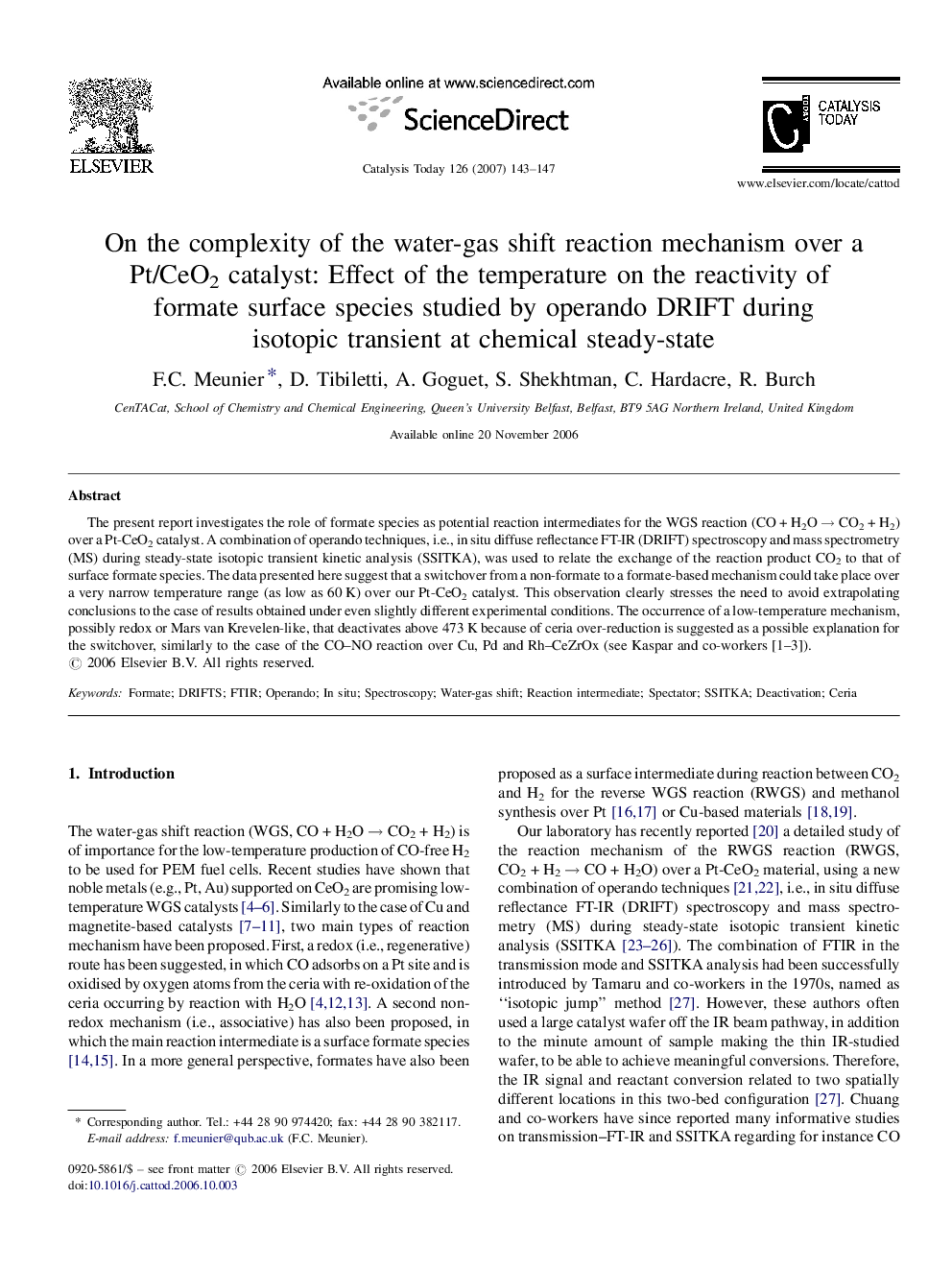| Article ID | Journal | Published Year | Pages | File Type |
|---|---|---|---|---|
| 57968 | Catalysis Today | 2007 | 5 Pages |
The present report investigates the role of formate species as potential reaction intermediates for the WGS reaction (CO + H2O → CO2 + H2) over a Pt-CeO2 catalyst. A combination of operando techniques, i.e., in situ diffuse reflectance FT-IR (DRIFT) spectroscopy and mass spectrometry (MS) during steady-state isotopic transient kinetic analysis (SSITKA), was used to relate the exchange of the reaction product CO2 to that of surface formate species. The data presented here suggest that a switchover from a non-formate to a formate-based mechanism could take place over a very narrow temperature range (as low as 60 K) over our Pt-CeO2 catalyst. This observation clearly stresses the need to avoid extrapolating conclusions to the case of results obtained under even slightly different experimental conditions. The occurrence of a low-temperature mechanism, possibly redox or Mars van Krevelen-like, that deactivates above 473 K because of ceria over-reduction is suggested as a possible explanation for the switchover, similarly to the case of the CO–NO reaction over Cu, Pd and Rh–CeZrOx (see Kaspar and co-workers [1–3]).
